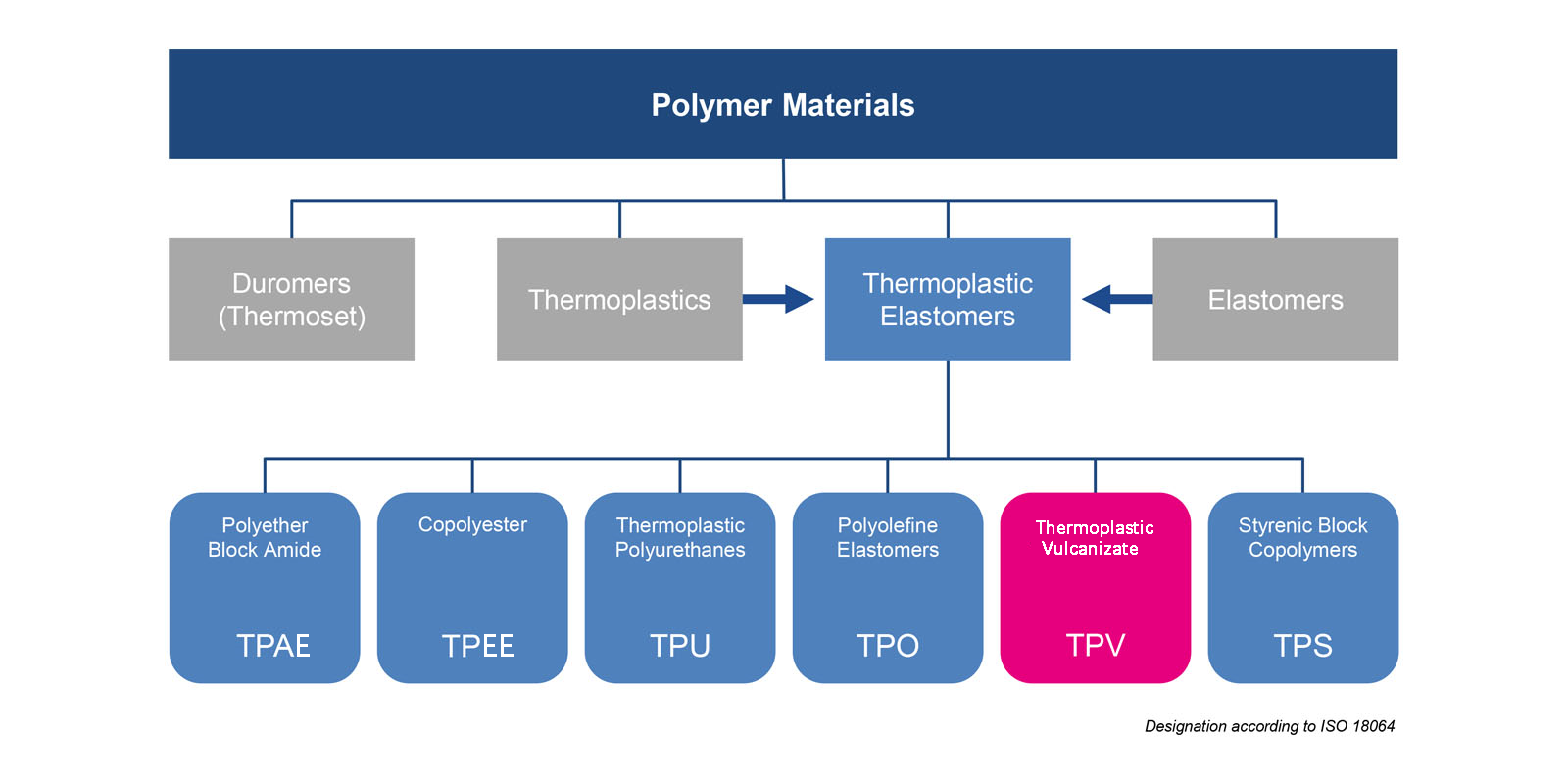TPV stands for thermoplastic vulcanized rubber. TPV is an elastic and thermoplastic processable material primarily based on polypropylene and ethylene propylene diene monomer rubber. They form a subcategory within the general category of thermoplastic elastomers (TPE).

Various TPV materials are usually manufactured by reaction extrusion. In classic cases, they are composed of a mixture of two main components, polypropylene (PP) and ethylene propylene diene rubber. During the blending process, the EPDM rubber phase is dynamically vulcanized. Due to the adaptive shear and mixing forces, the obtained rubber phase is highly dispersed and distributed in a continuous thermoplastic phase. In addition, other additives such as UV stabilizers, fillers, or colored pigments can be added to achieve the desired material properties.
Especially, the mechanical properties of TPV compounds largely depend on the distribution and size of the vulcanization component
In addition to the classic design of TPV materials, which account for the majority of all TPVs, as a mixture of polypropylene and dynamically crosslinked EPDM, there are also numerous other material combinations. For example, blends of thermoplastic copolyesters and various dynamically crosslinked rubbers including EVM.
TPV is produced in granular form and delivered to customers. The particles of Sungalon TPE can be processed without adding other substances. There are various methods for processing particles. The most commonly used methods are injection molding and extrusion processes.
According to the formula and performance, when processed through multi-component injection molding, the material may form adhesion with other materials. The existing products in the TPV product portfolio allow for bonding with polypropylene (PP), polybutylene terephthalate (PBT), and polyamide (PA).
Unlike elastomers, TPV products no longer require vulcanization during the processing, which simplifies downstream processing operations and greatly shortens cycle time. Another advantage is the elimination of cost intensive rework steps, as components do not need to be annealed or deburred like elastomers.
If cohesive bonding cannot be achieved, the thermoplastic elastomer mixture can be mechanically anchored through multi-component injection molding.
Another advantage is the recyclability of TPV compounds. A certain proportion of spruce and starter materials can be added to the original material.
In addition, Sungalon TPE is intensifying the development of new formulas, in which recycled materials have been used in the production process.
Thermoplastic hybrid materials (GP610) in product portfolio ®) The TEH technology can almost be classified as TPV materials.
Classic TPS materials repeatedly reach their limits in terms of high temperature stability and their performance on fuels and lubricants. By adding GP610 Materials, Sungalon TPE provides customers with the opportunity to overcome these limitations and expand their application range, from thermoplastic elastomers to various engines, drives, or cooling devices.
GP610 The formulation of the compound makes it possible to have ideal performance.